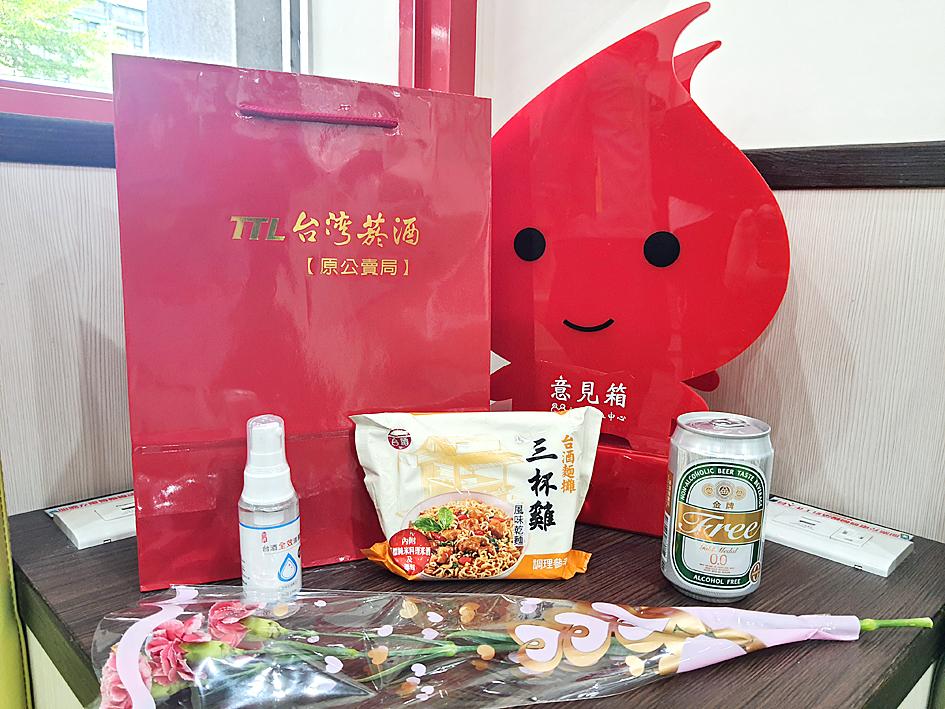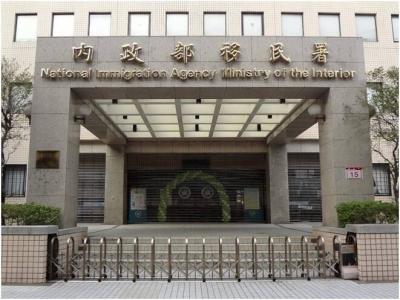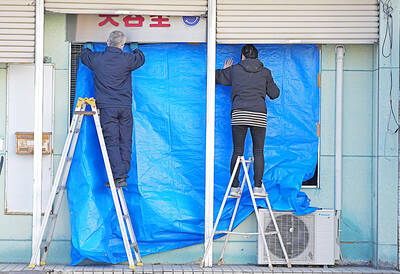The Taiwan Blood Services Foundation yesterday called on people to donate blood, as stocks for all types are low.
Demand for type O blood is the highest, but nationwide there is just enough for 4.9 days, 13,000 bags short of safety levels, while supplies of type A, type B and Type AB are all below the seven-day safety level, the data showed.
Demand is highest in Taipei, with stocks of O, A, B and AB enough for between three and five days, foundation public relations director Li Lei (黎蕾) said.

Photo: Hung Mei-hsiu, Taipei Times
Blood stock levels have been falling since the COVID-19 pandemic began, she said, adding that Taiwanese who return from nations listed under the government’s level 2 travel advisory are banned from donating blood for 28 days, which has affected about 1,000 to 2,000 potential donors.
The cancelation of blood drives has contributed to the shortage, although even when collection drives have been held, turnout has been low, she said.
People should not worry about donation stations’ hygienic practices, as disinfection measures are fully implemented.
Meanwhile, Democratic Progressive Party Hsinchu City councilors Shih Nai-ju (施乃如) and Lee Yen-hui (李妍慧) urged people to donate on Saturday during a drive at Big City shopping mall sponsored by the Hsinchu Blood Center and Taiwan Tobacco and Liquor Corp.
Those who donate 250cc or more would receive prizes such as instant noodles or a poster signed by Taiwan Beer basketball player Wang Tzu-kang (王子綱).
Additional reporting by Hung Mei-hsiu

A small number of Taiwanese this year lost their citizenship rights after traveling in China and obtaining a one-time Chinese passport to cross the border into Russia, a source said today. The people signed up through Chinese travel agencies for tours of neighboring Russia with companies claiming they could obtain Russian visas and fast-track border clearance, the source said on condition of anonymity. The travelers were actually issued one-time-use Chinese passports, they said. Taiwanese are prohibited from holding a Chinese passport or household registration. If found to have a Chinese ID, they may lose their resident status under Article 9-1

Taiwanese were praised for their composure after a video filmed by Taiwanese tourists capturing the moment a magnitude 7.5 earthquake struck Japan’s Aomori Prefecture went viral on social media. The video shows a hotel room shaking violently amid Monday’s quake, with objects falling to the ground. Two Taiwanese began filming with their mobile phones, while two others held the sides of a TV to prevent it from falling. When the shaking stopped, the pair calmly took down the TV and laid it flat on a tatami mat, the video shows. The video also captured the group talking about the safety of their companions bathing

PROBLEMATIC APP: Citing more than 1,000 fraud cases, the government is taking the app down for a year, but opposition voices are calling it censorship Chinese Nationalist Party (KMT) Chairwoman Cheng Li-wun (鄭麗文) yesterday decried a government plan to suspend access to Chinese social media platform Xiaohongshu (小紅書) for one year as censorship, while the Presidential Office backed the plan. The Ministry of the Interior on Thursday cited security risks and accusations that the Instagram-like app, known as Rednote in English, had figured in more than 1,700 fraud cases since last year. The company, which has about 3 million users in Taiwan, has not yet responded to requests for comment. “Many people online are already asking ‘How to climb over the firewall to access Xiaohongshu,’” Cheng posted on

A classified Pentagon-produced, multiyear assessment — the Overmatch brief — highlighted unreported Chinese capabilities to destroy US military assets and identified US supply chain choke points, painting a disturbing picture of waning US military might, a New York Times editorial published on Monday said. US Secretary of Defense Pete Hegseth’s comments in November last year that “we lose every time” in Pentagon-conducted war games pitting the US against China further highlighted the uncertainty about the US’ capability to intervene in the event of a Chinese invasion of Taiwan. “It shows the Pentagon’s overreliance on expensive, vulnerable weapons as adversaries field cheap, technologically